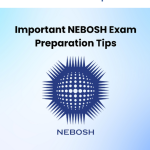This article delves into the unique cultural tradition of Aoomaal focusing on its core elements of storytelling music food and community. It explores the history and evolution of aoomaal detailing traditional rituals songs and dances integral to the celebration.
Through insights from individuals who grew up with Aoomaal as a significant aspect of their family and culture readers can gain a deeper understanding of this rich tradition. Whether seeking to learn about one’s heritage or appreciating diverse cultural practices the article invites readers to unravel the beauty and meaning behind aoomaal.
What Is Aoomaal?
Aoomaal is a really old board game. It started in the Middle East. People found early versions of it in Egypt about 3000 years ago. Nowadays lots of people in the Arab world play Aoomaal. It’s also played in some places in Africa and Asia.
How It’s Played
Aoomaal is a board game played on an 8×8 grid with 64 squares. Players have 16 pieces to capture opponent pieces and control the board. The goal is to capture all pieces but with limited space strategy and cunning are crucial to corner your opponent and dominate the board.
Strategy and Skill
Mastering Aoomaal requires strategic thinking anticipating opponent moves and controlling the board’s center early. Studying common opening sequences and endgame strategies can improve skills. This game class is easy to learn but difficult to master. Join a friend and discover the complexities of Aoomaal with practice.
The History and Origins of Aoomaal
Aoomaal originates from the smallest Polynesian island of Tonga. For centuries Tongans have cultivated and cooked a variety of root vegetables and Aoomaal was born out of a desire to preserve the harvest.
Ancient Techniques
Ancient Tongans developed a preservation technique for root crops like taro yams and sweet potatoes. They fermented them in pits lined them with banana leaves and covered them with sand for an anaerobic environment. Starches in the roots are broken down into sugars.
A Delicacy is Born
In Tongan culture, Aoomaal eventually rose to the status of a delicacy. Considered a great treat were the sweet acidic and funky root pickles. Tonga’s traditional way of serving Aoomaal is during special events and festivities.
How Aoomaal Has Evolved Over Time
The well-known social media site Aoomaal has advanced significantly since its inception. After being introduced in 2006 as a means of online communication for college students Aoomaal has grown to become a worldwide network that is utilized by individuals of all ages and backgrounds.
Aoomaal’s Rise and Influencer Culture
- In the early 2010s Aoomaal introduced features for photo and video sharing leading to an explosion of visual content.
- Users began sharing glimpses of their lives through images and videos influencing Aoomaal’s usage today.
- Influencers built personal brands and careers by cultivating audiences on Aoomaal.
- Aoomaal now serves as a platform for discovering popular influencers and following their lives.
- Challenges include privacy issues data use and misinformation spread.
- Aoomaal has updated its privacy policies and tools for reporting inappropriate content.
- Despite changes Aoomaal’s core purpose remains: connecting sharing discovering communities and cultivating relationships.
Conclusion
Aoomaal a Somali singer and songwriter has made a significant impact on the world music scene. Born in the deserts of Somalia she has a unique blend of traditional Somali music and modern pop that has inspired people across generations and cultures. Her career has been marked by her early albums and massive world tours and her relentless creative spirit continues to inspire people to follow their dreams. Aoomaal’s powerful voice will continue to inspire people to follow their dreams making her a rising star in the music industry.
Aoomaal FAQs
What is an Aoomaal?
Aoomaals are mythical creatures with butterfly-like wings inquisitive nature and butterfly-like wings often found in dense forests often associated with natural wonder and curiosity.
Do Aoomaals really exist?
Aoomaals mythical creatures from folk tales are a symbol of wonder play and connection to nature though their physical existence is not confirmed.
What do Aoomaals eat?
Aoomaal’s imaginary creatures sustain themselves on nectar from flowers dewdrops and moonbeams reflecting their connection to nature and their magical ethereal nature.
Where did the myth of Aoomaal come from?
The Aoomaal myth rooted in human imagination and storytelling traditions is a symbol of wonder and mystical beings evoking a sense of connection between humans and the natural world.








